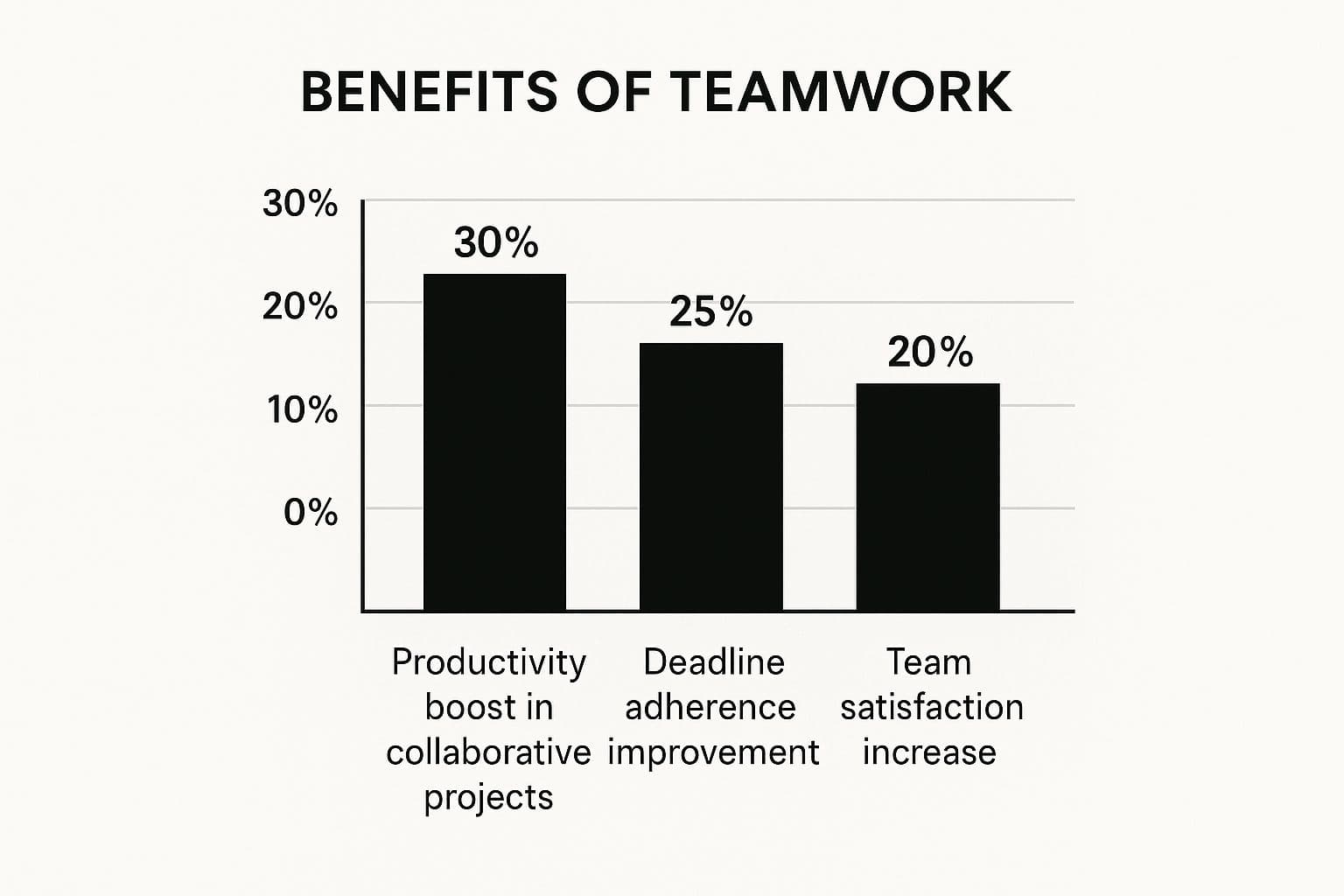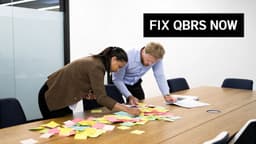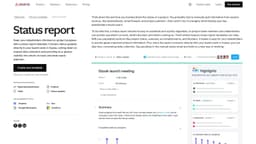Before you can even think about collaborating on a project, you have to get everyone on the same page about the goals and scope. This isn't just a formality; it's the foundation that prevents confusion and wasted effort down the line. The trick is to build the project vision together, making every team member feel like a stakeholder from day one.
Build a Foundation for Meaningful Collaboration
Jumping straight into tasks without a clear, shared vision is one of the fastest ways to derail a project. Real collaboration is more than just splitting up a to-do list; it's about creating a collective sense of purpose. Before a single deadline is set, the entire team needs to agree on the "why" behind the work.
This means going beyond a simple project brief. Get everyone in a room (virtual or otherwise) and hash out what a successful outcome actually looks like. This isn’t a task just for managers. Input from every single role is vital. A developer might see a technical roadblock that could throw off the timeline, while a marketer knows what customers truly expect from the final product. These early conversations are pure gold for setting goals that are both ambitious and realistic.
To really kickstart this process, it's helpful to break down the core building blocks of a collaborative project.
Core Elements for Successful Project Collaboration
This table outlines the essential building blocks for starting any collaborative project on the right foot.
| Element | What It Looks Like in Practice | Why It Drives Success |
|---|---|---|
| Shared Vision | A collaborative kickoff meeting where everyone contributes to a one-sentence project mission. | Ensures everyone is rowing in the same direction and understands the "why" behind their tasks. |
| Clear Metrics | The team agrees on 3-5 specific, measurable Key Performance Indicators (KPIs) to track progress. | Creates a shared definition of "done" and "successful," eliminating guesswork and subjectivity. |
| Defined Scope | A simple document listing what is "in-scope" and, crucially, what is "out-of-scope." | Prevents scope creep, keeps the team focused, and provides a clear "no" when needed. |
With these elements in place, you've created a strong framework that empowers the team and keeps everyone aligned from the get-go.
Define Success Metrics Together
Once the vision feels solid, the next step is to make it measurable. When the team defines its own success metrics, it creates a powerful sense of ownership over the outcome.
Instead of dictating targets from the top down, spark a conversation with questions like:
- What does success look like six months from now?
- What specific numbers will prove we hit our goal?
- Which data points will actually matter to us and our stakeholders?
This shared process guarantees that everyone understands and buys into the targets. These initial discussions are so important; in fact, our guide on how to run effective team meetings that drive results has some great tips for structuring these conversations.
Create a Clear Project Scope
Finally, you absolutely have to lock down the project scope. This means creating a straightforward list of what's "in" the project and—just as important—what's "out." This simple act of setting boundaries is your best defense against "scope creep," that sneaky expansion of a project that blows up timelines and burns out your team.
A well-defined scope becomes your North Star. It helps the team stay focused and gives them a framework for making smart decisions when new ideas or requests pop up. This kind of proactive alignment is critical, especially when you consider that the average global project performance rate is only about 73.8%. So many of those failures come from simple miscommunication and fuzzy objectives.
The chart below shows just how much a solid collaborative foundation can impact the things that matter most.

As you can see, investing time in true collaboration pays off with real improvements in how productive, punctual, and happy your team is.
Get Clear on Who's Doing What

I've seen it happen a thousand times: a project grinds to a halt not because of a lack of skill, but because of confusion. When nobody is quite sure who owns what, you get a mess. Important tasks get dropped, two people accidentally do the same work, and frustration starts to build.
To get any meaningful collaboration done, every single person on the team needs to know exactly what they’re responsible for and how their part fits into the bigger puzzle. This isn’t about creating a rigid, bureaucratic system. It’s about giving people clear ownership so they feel empowered to act.
When roles are crystal clear, your team builds trust. It becomes obvious who to ask about a specific task or where to go for a final sign-off, which cuts down on endless back-and-forth and keeps things moving.
A No-Nonsense Way to Define Roles
You might have heard of frameworks like RACI (Responsible, Accountable, Consulted, Informed), and while they can feel a bit corporate, the basic idea is solid. You just need to answer one simple question for every major part of the project: Who is doing what?
Let’s imagine a marketing team getting ready to launch a new social media campaign. Here’s how they could break it down:
- Responsible: The social media manager writes the posts, schedules them, and keeps an eye on engagement. This is the person doing the hands-on work.
- Accountable: The marketing director is ultimately on the hook for the campaign's success. They give the final approval and own the outcome.
- Consulted: The graphic designer needs to be looped in on all visual assets. Their feedback and files are needed before anything goes live.
- Informed: The sales team gets a heads-up about the campaign's launch and messaging. They aren't directly involved, but they need to be kept in the loop to handle customer questions.
See how that clears things up? The social media manager has their a clear to-do list, the designer knows when to chime in, and the sales team is ready for action. No guesswork needed.
Assigning roles is the first step, but you also need to make sure everyone stays on the same page. There are some fantastic project management meeting tools out there that make it easy to track who’s assigned to what.
Put Those Roles Where Everyone Can See Them
Once you've figured out the roles, don't just bury them in a Google Doc that no one ever opens again. They need to be front and center in your team’s daily workflow. This is where a good project management tool is worth its weight in gold.
For a software team running on Agile, this could be as simple as assigning user stories to developers on a Trello or Jira board. If you're on a content team, it might mean assigning writers, editors, and designers to different phases of an article in a shared tool like Asana.
The goal is to make ownership totally transparent. When everyone can see who's responsible for what and when it's due, it does more than just clarify tasks—it gets people talking and helps them spot potential roadblocks before they become real problems.
Choose Your Collaboration Tech Stack Wisely
Your team needs a digital workspace that feels like a help, not a hindrance. The right software can become the central hub for your project, connecting people, tasks, and files without any fuss. The wrong tools? They just turn into digital junk drawers—cluttered, ignored, and causing more headaches than they solve.
The goal isn't to chase the shiniest new app with a million features. It’s about building a simple, connected tech stack that fits how your team already works. I’ve seen it happen too many times: teams get sold on a complex system because it looks powerful, only for it to sit unused because no one wants to deal with the steep learning curve. Trust me, a simple tool that everyone actually uses is always better than a powerhouse platform collecting digital dust.

Take a look at this interface from Asana. It shows exactly how a well-designed tool can lay out workflows, tasks, and deadlines all in one spot. The real magic here is the clarity—anyone can jump in and immediately see the project's status, who’s handling what, and how all the moving parts fit together.
Balancing Power and Simplicity
Picking your tools is always a bit of a balancing act. On one hand, a powerful, all-in-one platform might give you detailed reporting and fancy automation, but it could also just overwhelm your team. On the other, a handful of simple, single-purpose apps might be easier to pick up, but you risk scattering information all over the place.
The trick is to start with what your project truly needs. Don't get distracted by features you'll probably never touch. Just focus on these three core functions first:
- Communication: How will your team chat in real-time and share quick updates? Think tools like Slack or Microsoft Teams.
- Task Management: Where will you track who’s doing what and when it’s due? This is where platforms like Trello, Asana, or Monday.com come in.
- File Sharing: Where is your single source of truth for documents, designs, and other assets? You'll want a reliable spot like Google Drive or Dropbox.
Integrating Your Digital Workspace
Once you have your core tools, the real secret sauce is making sure they talk to each other. A disconnected tech stack forces people to constantly jump between apps, copying and pasting information and just wasting time. Real efficiency comes from integration.
For instance, your team should be able to turn a conversation in Slack directly into a task in Asana. Or maybe attach a file from Google Drive to a Trello card without ever leaving the Trello board. These small connections add up, creating a smooth workflow that cuts down on friction and keeps everyone focused on the work itself.
It’s no surprise the collaboration software market is booming. Valued at 6.56 billion** in 2023, it's projected to skyrocket to nearly **19.86 billion by 2032. This just goes to show how essential digitally connected teamwork has become for businesses everywhere. You can explore more data on this trend to see how other organizations are adapting.
Ultimately, building the right tech stack isn’t a one-and-done task. Start simple, listen to your team’s feedback, and don’t be afraid to make changes as your project grows. The right set of tools will make it easier for everyone to collaborate effectively, whether they're sitting across the table or on opposite sides of the world.
Create a Communication Rhythm That Works

Great collaboration isn't about talking all the time; it's about predictable, purposeful communication. A constant barrage of notifications and meetings just leads to burnout, making it impossible to get any deep work done. What you really need is a steady rhythm that keeps everyone in the loop without creating a ton of noise.
Think of it like city traffic. Without stoplights and clear lanes, you get chaos. A solid communication plan is your project's traffic management system, making sure information flows where it needs to, when it needs to. This kind of structure is non-negotiable if you want to successfully collaborate in a project.
Designating Your Communication Channels
First things first: decide which tool you’re using for what. When your team knows exactly where to find information, they stop wasting time digging through old messages and start getting more done. A simple, intentional plan makes all the difference.
For example, a marketing team I worked with set up a system that looked something like this:
- Slack: This was for quick questions, fast back-and-forths, and informal brainstorming—basically, the digital version of tapping someone on the shoulder.
- Asana: All official task updates, progress comments, and final file attachments lived here. It became our project's undisputed record.
- Email: We kept this strictly for formal communication with outside partners or for major company-wide announcements.
- Weekly Stand-up: A tight, 15-minute sync every Monday morning to set priorities and flag any roadblocks for the week.
This simple bit of clarity meant big decisions never got buried in a random chat thread. It also established our project management tool as the single source of truth for who was doing what. It’s a small change that builds accountability almost overnight.
Making Work Visible to Everyone
One of the biggest productivity killers is the constant, "Hey, what's the status of...?" tap on the shoulder. You can eliminate almost all of these check-ins by making your project's progress visible to the entire team at a glance. When the workflow is out in the open, people feel more empowered and in control of their own work.
This is where a shared project board—in a tool like Trello or Jira—is worth its weight in gold. By simply moving cards across columns like "To Do," "In Progress," and "Done," anyone can see exactly where a task stands without interrupting the person doing the work. This kind of visible progress naturally builds trust and cuts down on the need for endless status meetings.
The need for this kind of structure isn't just a team-level issue; it's a global one. The Global Cooperation Barometer 2025 shows that while overall global cooperation has stalled amid various challenges, areas like climate and technology are still moving forward. Why? Because they depend on structured partnerships and clear communication to get anything done. By creating your own internal "cooperation barometer" with a clear communication rhythm, you’re setting your project up to succeed no matter what comes its way.
Navigate Conflict and Keep the Project Moving
Let's be realistic: no project is a straight line from start to finish. You’re going to hit bumps. Disagreements over strategy, unexpected technical hurdles, or simple miscommunications aren't just possible; they're guaranteed.
But here’s the thing—these moments of friction aren't signs of failure. They’re the real test of a team's strength. A team that can work through conflict doesn't just survive, it actually gets stronger and more resilient. This is how you go from being a group of people assigned to a task to a genuinely collaborative unit.
Foster Psychological Safety First
Before you can tackle a single problem, people need to feel safe enough to speak up. This idea is called psychological safety, and it’s the absolute foundation for solving tough challenges. It’s the feeling in the room that you can take a risk without being shot down.
When your team has this, people will admit when they’ve made a mistake, ask a "dumb" question, or challenge a popular idea without fearing they'll be embarrassed or punished. This is how you catch small issues before they snowball into project-killers.
A simple way to build this? Have leaders admit their own mistakes. A project manager saying, "You know what, I completely misjudged the timeline for this feature, and that's on me. Let's figure out a new plan together," instantly changes the dynamic. It shifts the focus from blame to solutions.
Focus on the Problem, Not the Person
When tensions rise, it's so easy for conversations to turn personal. A designer and a developer might butt heads over a new feature, and suddenly it’s about whose idea is better. The trick is to constantly pull the conversation back to the objective problem.
Here's how I've seen it work in practice:
- Start with the shared goal: "Okay, we all want to build an amazing user experience here."
- Define the neutral problem: "Right now, the proposed design is creating some real challenges with our current backend."
- Brainstorm solutions as a team: "What are some ways we could tweak this? Can we find an approach that still looks great but works within our technical limits?"
This reframes the entire discussion. It’s no longer Designer vs. Developer; it’s the team vs. the problem. If you want to dive deeper into getting different departments on the same page, check out our guide to enhance your business with cross-functional communication. It’s packed with useful tips.
Celebrate Small Wins and Learn from Everything
Keeping morale high during a long, complex project is crucial. One of the best ways to do this is to celebrate the small victories along the way. Did the team finally crush a bug that’s been plaguing you for weeks? Did a junior developer pitch a fantastic idea in a meeting? Call it out. Acknowledge it. These little moments of recognition build momentum.
Just as important is learning from everything—the good and the bad. After each major milestone or sprint, hold a quick retrospective. You don't need a formal, drawn-out meeting. Just ask three simple questions:
- What went well?
- What didn't go so well?
- What will we do differently next time?
This creates a constant feedback loop that turns every experience into a lesson. It’s not just about fixing what’s broken; it’s about building a process for continuous improvement that makes your team smarter and more effective with every single project.


